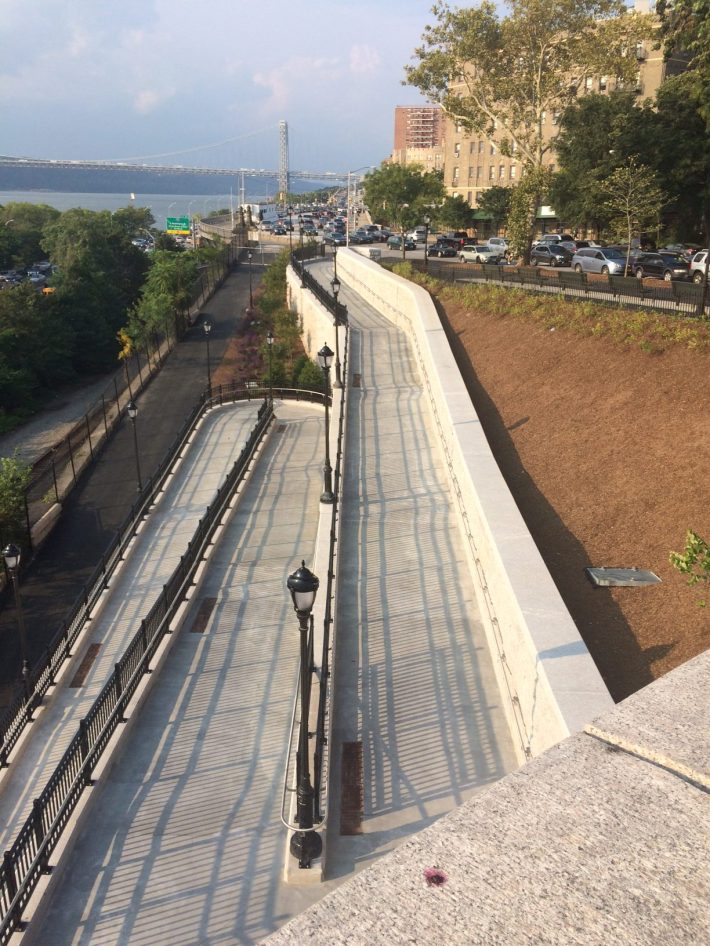This summer, Governor Andrew Cuomo and longtime Assembly Ways and Means Chair Herman "Denny" Farrell agreed to some mutual back-scratching. Cuomo's overbuilt, $5 billion Tappan Zee Bridge replacement would be named for his father Mario, and Riverbank State Park, considered a legacy of the retiring Assembly member, would be renamed for Farrell.
Also named for Farrell: a new $24.4 million pedestrian bridge connecting 151st Street to the Hudson River Greenway, spanning the Henry Hudson Parkway. On September 5, Farrell's last day in office, Cuomo celebrated the completion of the Herman "Denny" Farrell Pedestrian Bridge, which opened to the public last week. (Construction didn't come without hiccups on this state-funded project. Originally set to wrap up in late 2016, contractors were forced to take down and redo the bridge abutments after they failed a quality-control inspection.)
Better access to the waterfront for walkers, bikers, and wheelchair users is good to have here. The nearest access points at 148th Street and 155th Street have stairs, not ramps.
As you can see in these photos, submitted by a reader, the state DOT spared no expense. Walking and biking infrastructure should be durable and high-quality, but the extravagance of the structure should give us some pause. As should the fact that it was secured by Farrell, who had extraordinary influence over state spending as Ways and Means chair.
Our tipster notes that the greenway just south of these ramps is a bumpy, bone-rattling mess. The city Parks Department is counting on relatively small participatory budgeting grants to fund improvements to the nearby Cherry Walk section of the path. Why can New York's various arms of government deliver a gold-plated greenway connection but have such difficulty maintaining the greenway itself?

Was this greenway bridge the best use of $24 million for walking and biking? Crossings with ramps aren't too far away, at 135th Street and 158th Street.
What are the other infrastructure priorities for active transportation in and around Farrell's Upper Manhattan district? How does this project rate compared to, say, the biking and walking improvements NYC DOT wants to build on the Macombs Dam Bridge and 145th Street Bridge over the Harlem River? Was any system used to rank different options? Could a project delivering the same public benefit have been built for less, enabling public funds to be distributed to other needs as well?
The fact is, the clearest discernible reason this project materialized the way it did is that Denny Farrell wanted it. In that way, this bridge is like a miniature version of Cuomo's Tappan Zee replacement, or Cuomo's Moynihan Train Hall.
In New York, who knows if you'll ever get well-maintained greenways or reliable transit. The one thing that's certain is you'll get to use edifices named after your local political barons.






